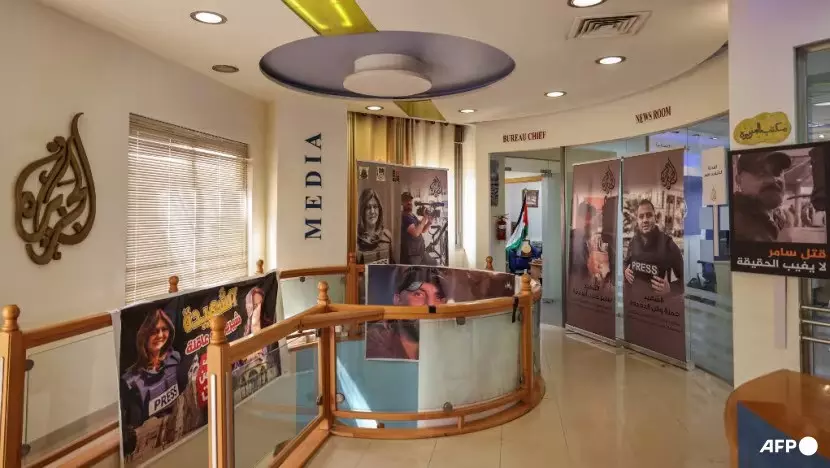Marina Bay Sands, Resorts World Sentosa change Singapore's tourism landscape Editor’s note This is the second in a three-part series on growing competition in Asia to develop integrated resorts and advice for Korea to boost its tourism industry. – ED A tour bus passes by Marina Bay Sands in Singapore in this undated photo. Courtesy of Singapore Tourism Board By Lee Hae-rin SINGAPORE — Marina Bay Sands (MBS) is an iconic integrated resort in Singapore, known for its striking architecture and luxurious amenities.
The resort, which opened in 2010, is a centerpiece of the city-state’s metropolitan skyline, consisting of three 55-story towers topped by a massive sky park, known as the Sands SkyPark. This rooftop area, perhaps the most famous feature of the resort, offers a 360-degree view of Singapore’s cityscape and the surrounding Marina Bay. It also features an infinity pool, one of the highest in the world.

Marina Bay Sands' infinity pool / Courtesy of Singapore Tourism Board Located in the heart of the city's business and finance hub, the integrated resort is also home to a convention center which hosts major business events throughout the whole year, a luxury hotel, a shopping mall featuring high-end brands, multiple fine dining options, theaters that host Broadway musicals and other performances, and the ArtScience Museum known for its lotus-like shape. All these features are what come into travelers' minds when they think of trips to Singapore, either for leisure or business. MBS and Resorts World Sentosa (RWS), another integrated resort on Sentosa Island that is more focused on family-friendly attractions, established themselves as the most-visited paid tourist attractions in Singapore almost immediately after opening in 2010 — in 2023, 48 percent of 13.
6 million international travelers to Singapore visited the two integrated resorts. An overview of Marina Bay Sands' convention center / Courtesy of Singapore Tourism Board The two integrated resorts have had a profound impact on Singapore’s economy, boosting its tourism sector and "contributed 1 to 2 percent" of the city-state's annual GDP growth before the COVID-19 pandemic, Singapore's Ministry of Trade and Industry said in 2019. Tourist arrivals doubled to 19.
1 million over a decade through 2019. The integrated resorts have also created thousands of jobs, both directly within the resorts and indirectly through supporting industries such as hospitality, retail and transportation. The success of the integrated resorts is reflected in the sharp increase in international visitor arrivals and higher tourist spending.
Singapore’s reputation as a global tourist destination has been bolstered, with the integrated resorts playing a central role in this transformation. While the economic benefits of the resorts are undeniable, the economic sustainability of the integrated resorts stems from their open casinos, which take less than 5 percent of the property’s floor space. According to MBS’s annual report, the gaming and non-gaming ratio of the integrated resort’s sales in 2022 stood at 63.
9 percent to 36.1 percent. RWS, developed by Genting Singapore during the same period as the MBS, also had its gaming-to-non-gaming ratio of sales standing at 72 percent to 28 percent for the same year, according to its annual report.
An aerial view of Resorts World Sentosa in Singapore / Courtesy of Singapore Tourism Board Regulatory framework on open casinos Introducing integrated resorts that included open casinos was a bold decision for the Singaporean government: an idea that was controversial, especially in a society with conservative values toward gambling. The decision to allow casinos that could be accessed by not only foreigners but also Singaporean nationals within these integrated resorts sparked a widespread public debate. Gambling was heavily regulated in Singapore, and social norms strongly discouraged it.
The government needed to strike a balance between reaping the economic benefits of casinos and managing the potential social costs, particularly the risk of gambling addiction. In response, a comprehensive regulatory framework was implemented to address these concerns, according to Lee Choong-ki, a professor of hotel and tourism management at Kyung Hee University. “One of the most significant measures introduced was the casino entry levy for Singaporeans and permanent residents (PRs),” the professor explained.
Under this policy, locals are required to pay 150 Singaporean dollars ($113.36) for a 24-hour entry pass or 3,000 Singaporean dollars for an annual pass to enter the casino. International visitors and locals queue up to enter the casino at Marina Bay Sands in Singapore, July 3.
Korea Times photo by Lee Hae-rin “This levy is designed to discourage casual and impulsive gambling among locals and ensure (entry to) only those who can afford to participate responsibly,” Lee said. The Singapore Tourism Board confirmed that the entry levy serves as a financial deterrent, reducing the likelihood of frequent gambling by locals, which is a key factor in preventing gambling addiction with the introduction of the Casino Control Act in June 2006. By making it costly for Singaporeans and permanent residents to access the casinos, the government aims to minimize the potential for gambling-related social problems.
To further protect vulnerable individuals, the government introduced a system of exclusion orders. Individuals with a history of gambling problems, those in financial distress or those deemed vulnerable can be barred from entering the casinos. Family members can also apply for exclusion orders on behalf of their relatives, and individuals can voluntarily exclude themselves through self-exclusion programs.
As of December 2023, some 3,300 Singaporeans were barred from entering the casinos upon requests from their family members. Another 117,000 were excluded for being under financial distress and 184,000 were voluntarily excluded through self-exclusion request. Also, to prevent gambling addiction, the Singaporean government has been raising awareness since August 2005 on the risks of problem gambling through public education campaigns with the National Council on Problem Gambling (NCPG).
The government also funded counseling and rehabilitation services for individuals affected by gambling addiction, ensuring that help is available for those in need. Notably, the Casino Regulatory Authority (CRA) was established in April 2008 to oversee the operations of the casinos in Singapore. The CRA is responsible for ensuring that the casinos comply with strict regulatory standards, such as restricting the integrated resorts’ gaming facilities to 5 percent of the total floor space and encouraging non-gaming establishments such as hotels, convention centers, shopping malls and entertainment venues to take over 90 percent of the total floor space.
The organization’s role also includes anti-money laundering regulations, fair gaming practices and responsible gambling measures, and it conducts regular audits and inspections to ensure compliance and monitors the social impact of the casinos. This high level of oversight ensures that the casinos operate responsibly and ethically, minimizing the potential negative effects on society. Lee pointed out the resort operators’ efforts to minimize the negative social impacts of casinos.
“To further protect vulnerable individuals, MBS developed the Responsible Gambling Program that not only assists people seeking help but also trains their staff on how to direct people to help, in collaboration with Harvard University's Medical School,” he said. Center of business, entertainment Several Singaporeans told The Korea Times that after over a decade of public debate and strict government-led regulations, the two integrated resorts have grown to become "symbols of Singapore that we (Singaporeans) are proud of." "Isn't Marina Bay Sands the first thing that pops up to your (foreign visitor's) mind when you think of Singapore? After all those years (of public debate), I think it became Singapore's undeniable landmark and one of the highlights that the city has to offer," Singapore-based office worker Jamie Liu, 34, told The Korea Times while dining with his family at one of the restaurants on a weekday evening.
Marina Bay Sands' shopping mall, The Shoppes / Courtesy of Singapore Tourism Board "We come here to eat, to shop, to work and to have fun and rest. We come here all the time, on weekdays, over the weekends and holidays, with friends, with families, with co-workers and on our own," he said, adding that the integrated resort is not only one of Singapore's greatest tourism assets, but also a big part of locals' daily lives. Amy Chow, 29-year-old office worker based in Singapore, mirrored Liu's view.
"Whenever there is a major company event, we try to book a space in the convention center, although it's almost always fully booked," she said, referring to the resort complex's MICE (meetings, incentive tours, conventions and exhibitions) facilities. "It's at the heart of what's happening in Singapore in terms of business and technology," she said. Chrisopher Khoo, a Singapore-based managing director of MasterConsult Services, highlighted that the state-led decision, which was "openly and vigorously discussed within the public for quite a long time," has met a consensus in Singapore.
"In the end it was a matter of weighing the economic benefits versus the likely social damage that the casinos would cause," said Khoo, who is also a veteran in Singapore's consulting, research and tourism industry, held various positions at the Singapore Tourism Board and also worked as a research director at PwC. "It was a Cabinet-level discussion and decision that came out in favor of the casinos. The prime minister himself made the announcement about why Singapore would proceed with the issuing of not one but two casino licenses.
He also gave assurances that social safeguards would be built before the casinos became operational," Khoo explained. "Almost 20 years after the big casino debate in Singapore if a renewed question were to be brought up today, I believe that there would be much fewer vocal resistance to the idea of another casino or expanded casino operations," he said. "Because the population of Singapore has seen that the introduction of the casinos has indeed brought tangible and visible economic benefits and while there may have been some social repercussions, they have actually been by and large very muted.
" The city-state’s gambling addiction rate stood at 4.1 percent in 2005 and 2.9 percent in 2008, but dropped to 2.
6 percent in 2011, then further down to 0.9 percent in 2017 and stood around 1.2 percent as of 2022.
In April, Japan, a still very socially conservative country, also approved a plan to build its first casino in the western city of Osaka. As a result, a 1.08 trillion ($8.
1 billion) resort is scheduled to open in 2029, when it will attract domestic and international tourists from neighboring countries, including Korea. A sunset view of Marina Bay Sands from Merlion Park in Singapore / Courtesy of Singapore Tourism Board MBS plans to expand its already-impressive complex by adding a fourth tower, slated to be completed by 2029, to solidify its status as a premier global destination for leisure, entertainment and business. The planned work will begin in July 2025.
The fourth tower will be a standalone building adjacent to the three existing towers, set to include a luxury hotel with approximately 1,000 rooms, a 15,000-seated arena with state-of-the-art facilities and additional retail, dining and gaming spaces. Singapore’s integrated resorts stand as a model for successfully integrating potential controversial development into a national strategy while safeguarding the well-being of its citizens, according to Lee. “Singapore has been very systematic and thorough in terms of gambling regulation,” Lee said, underscoring that Korea’s integrated resorts may in the near future refer to the city-state’s efforts to balance economic ambition with social responsibility.
.



















